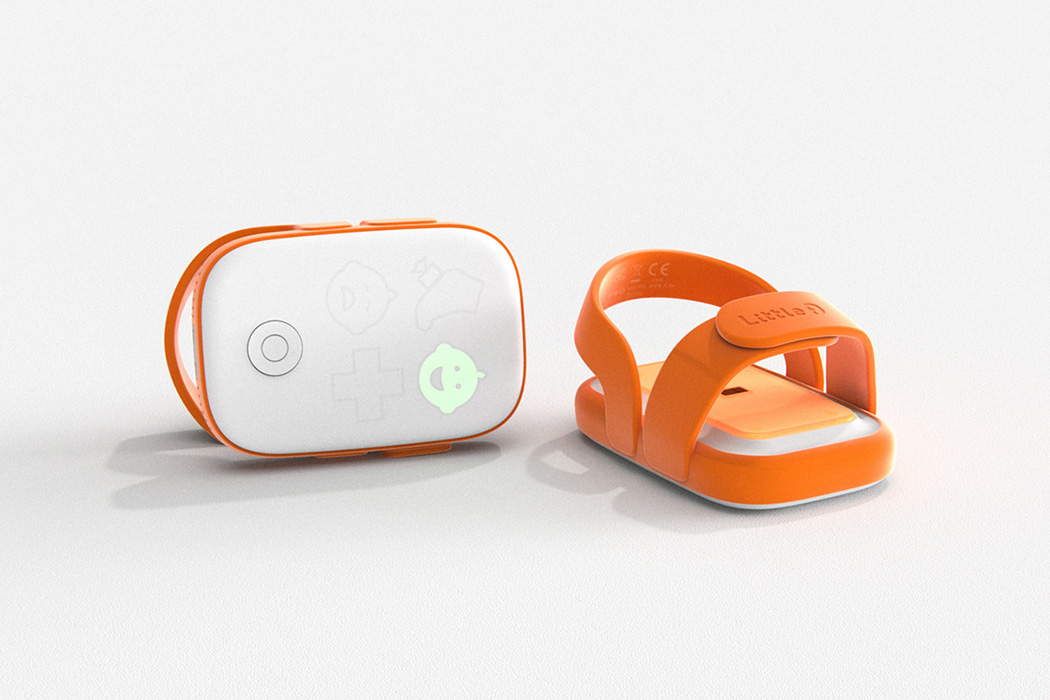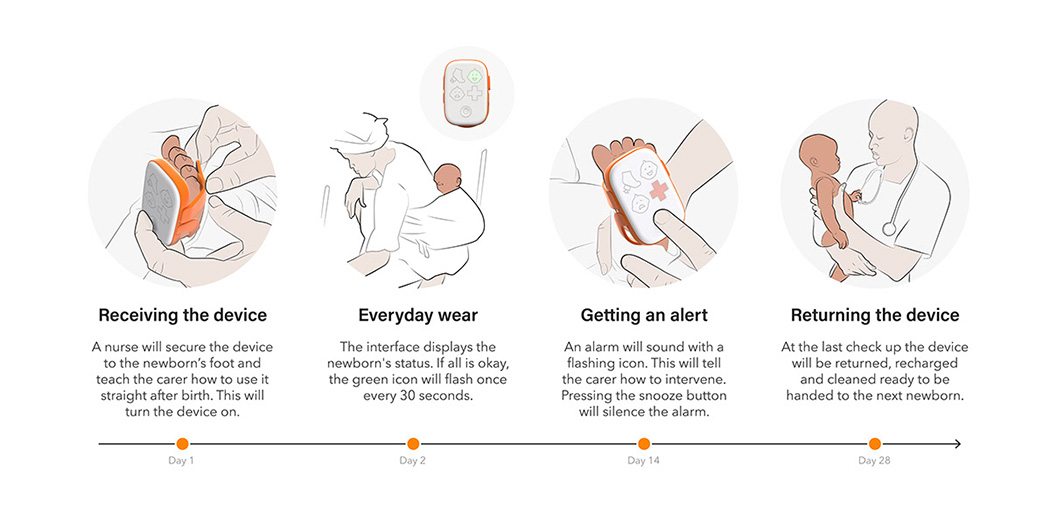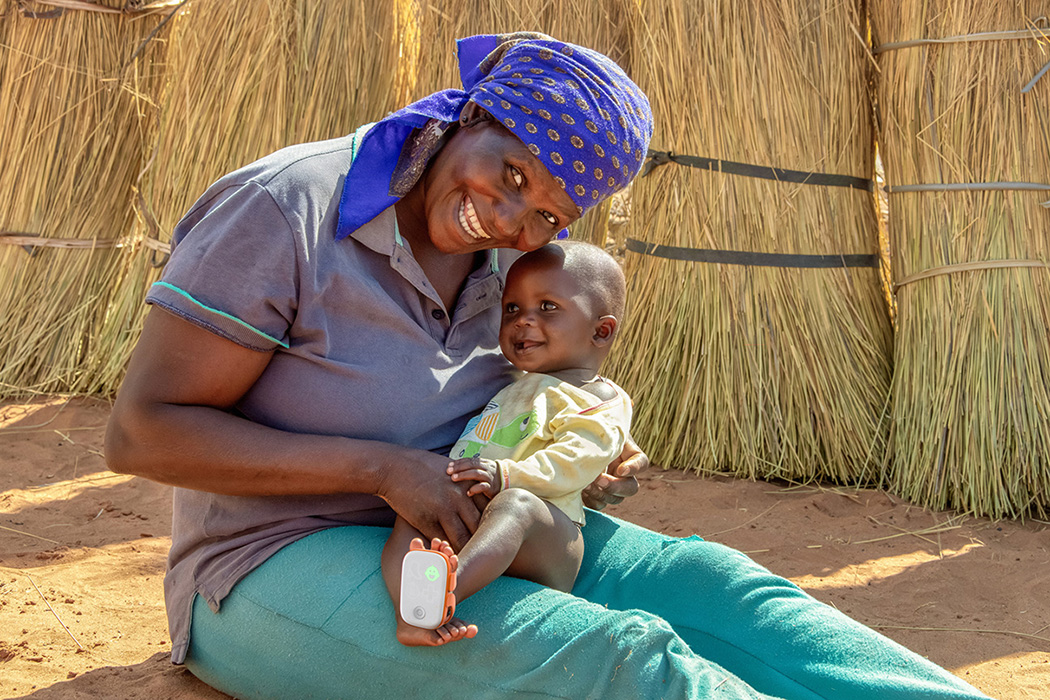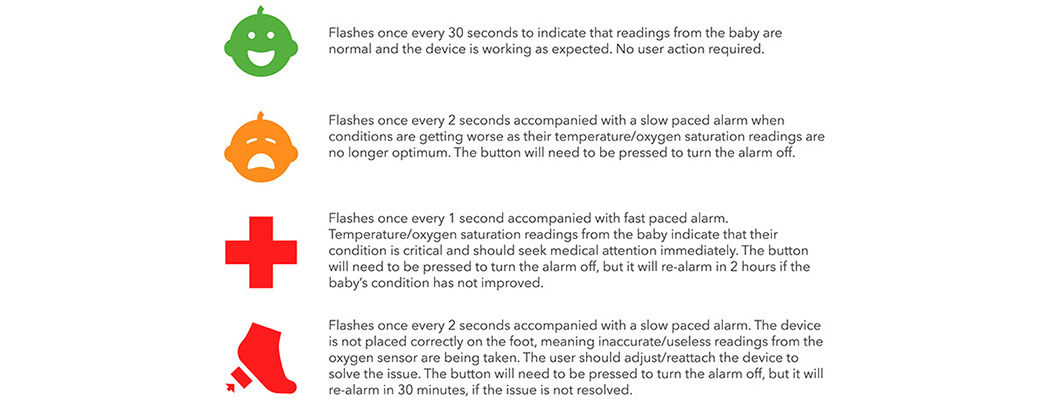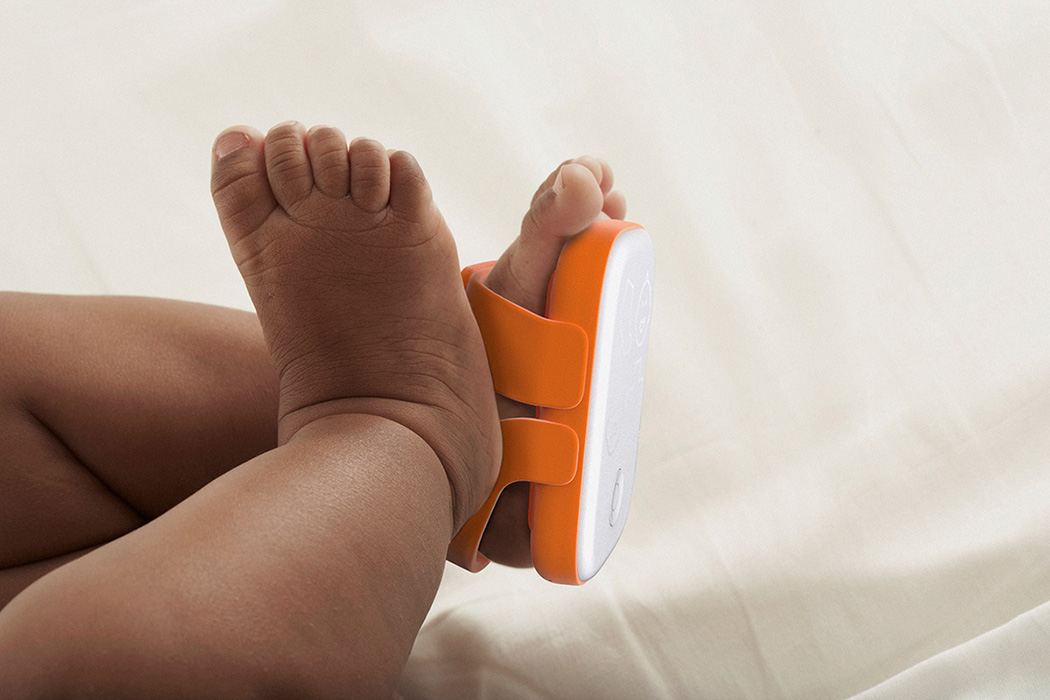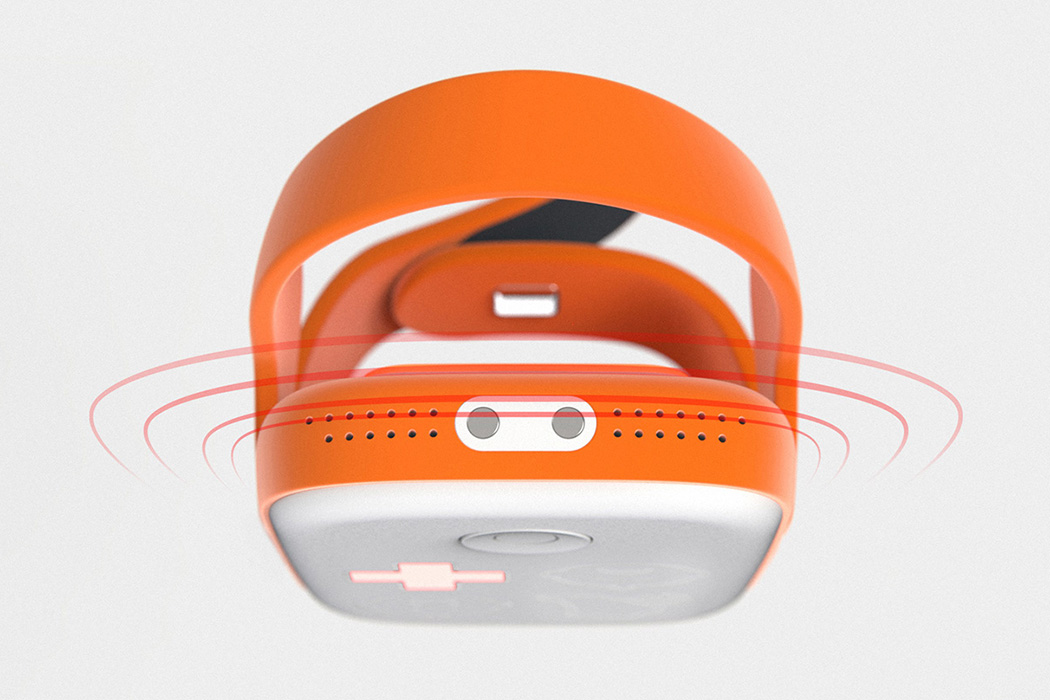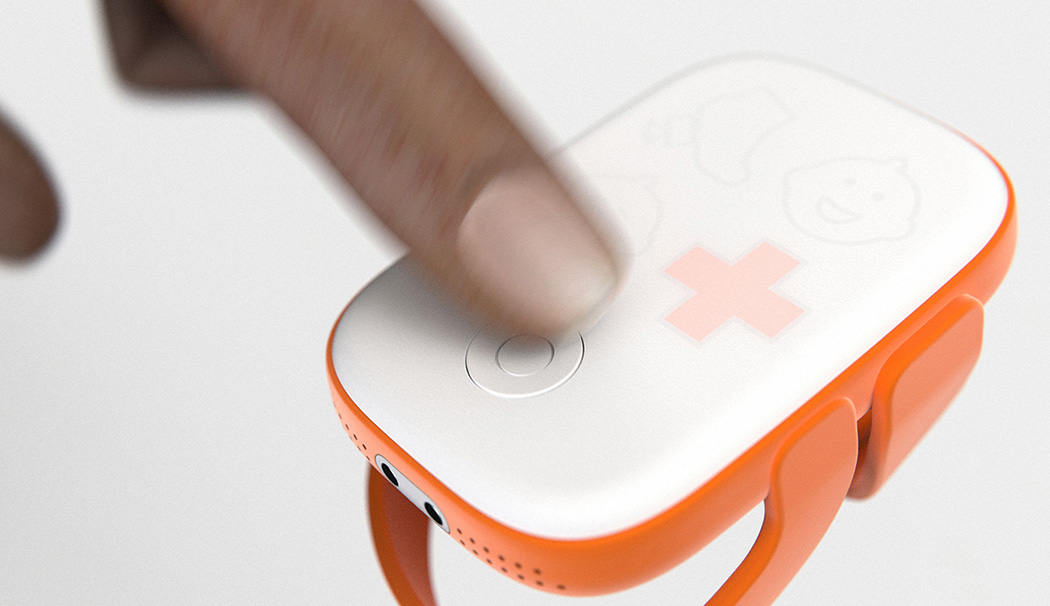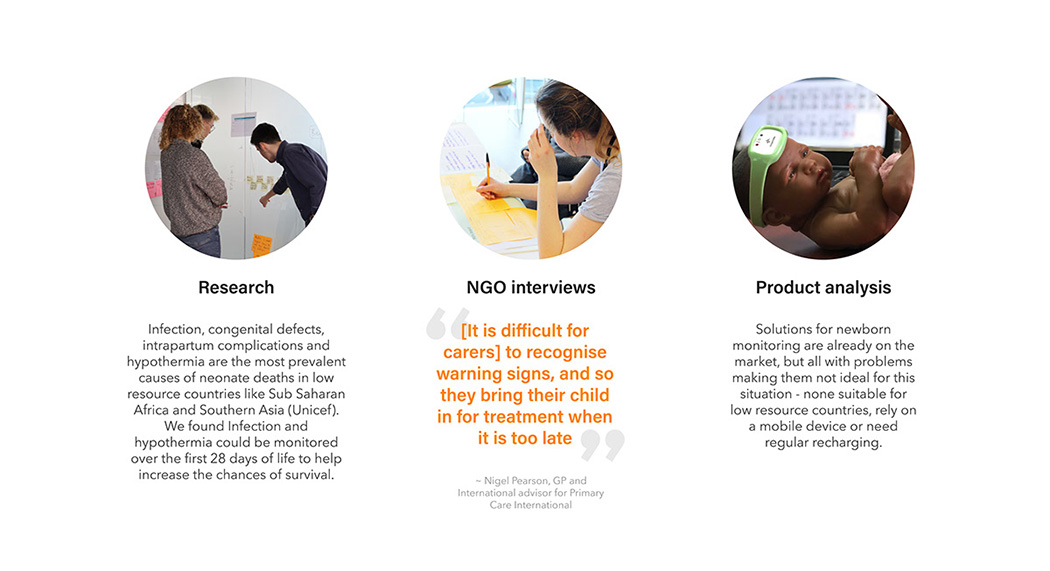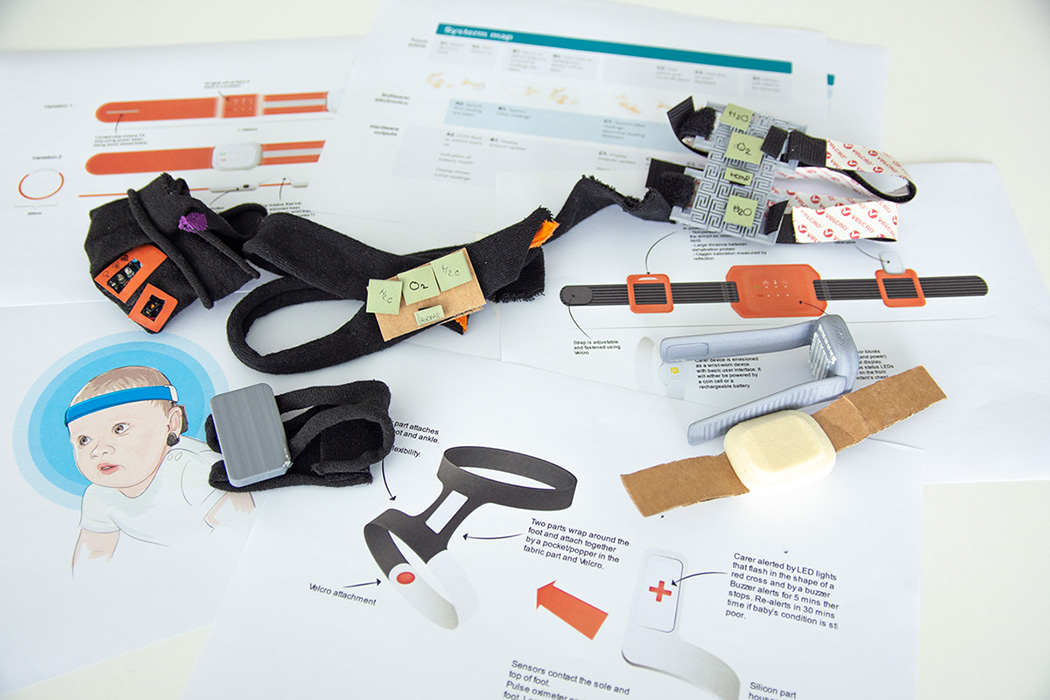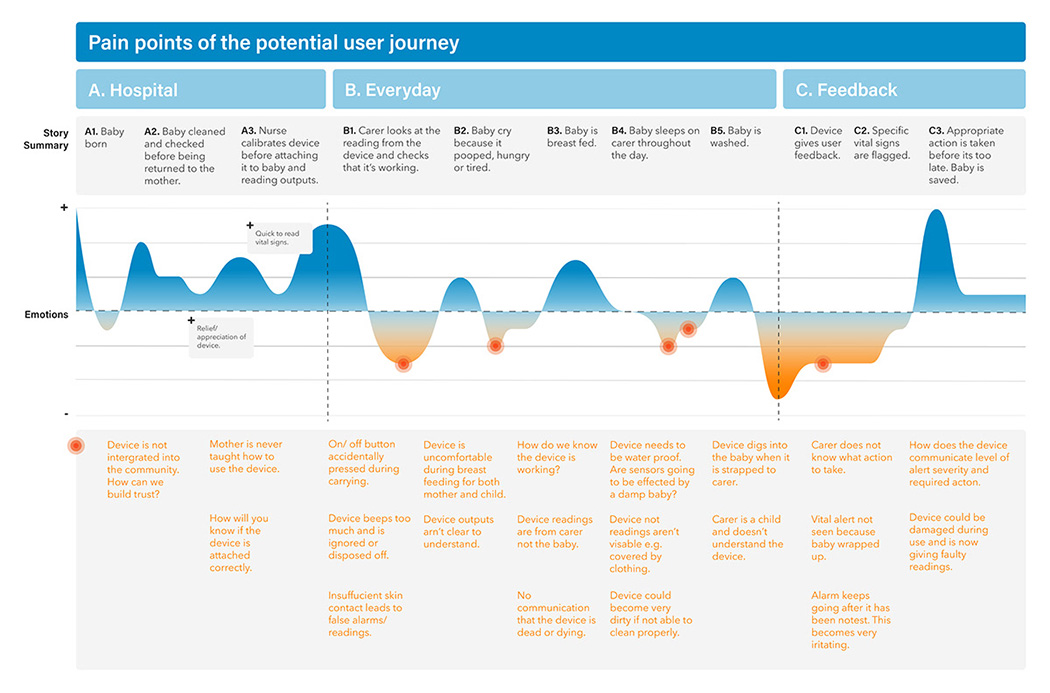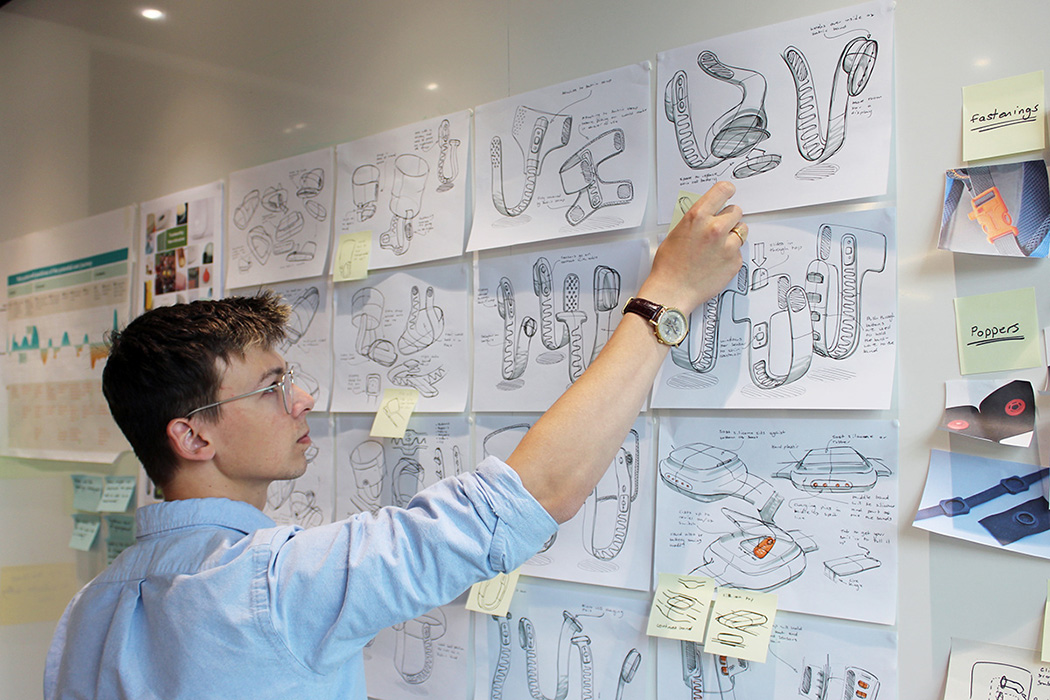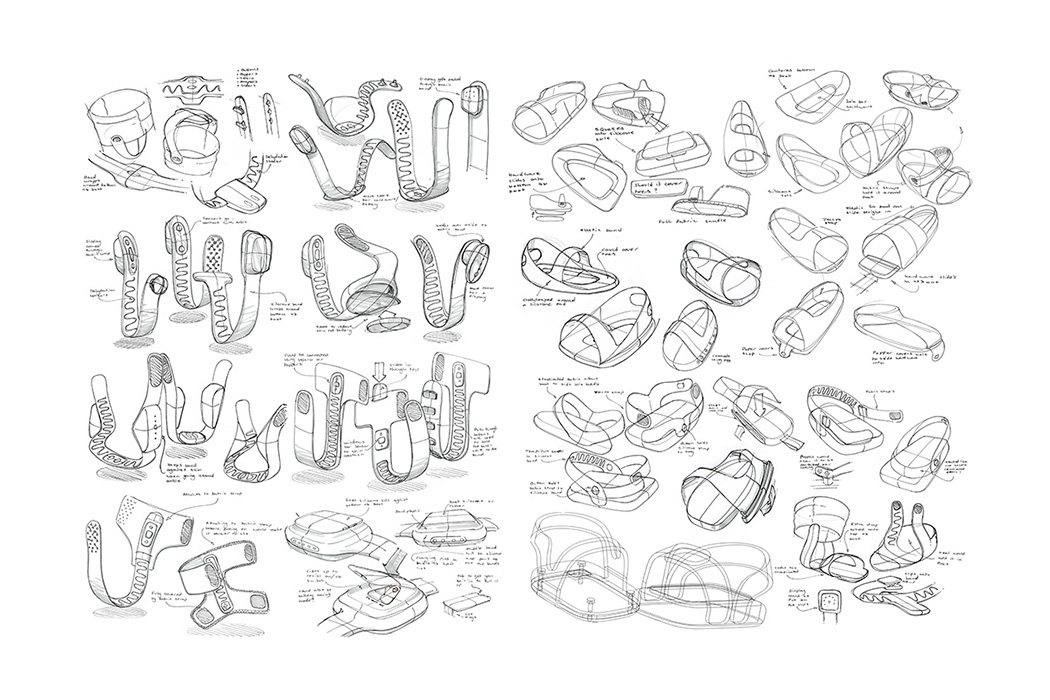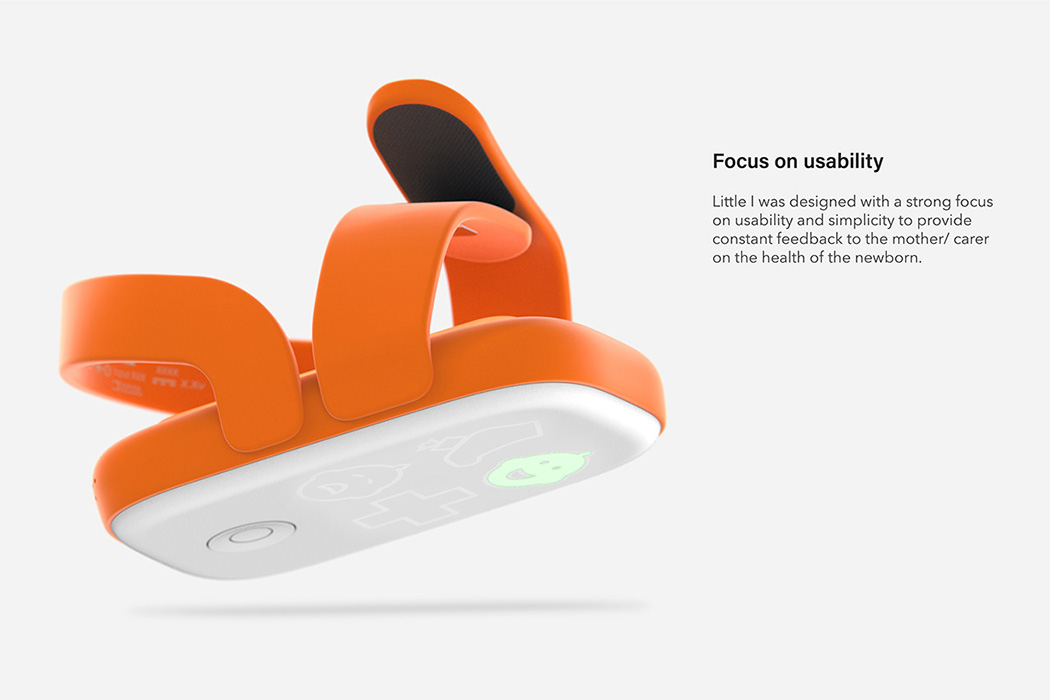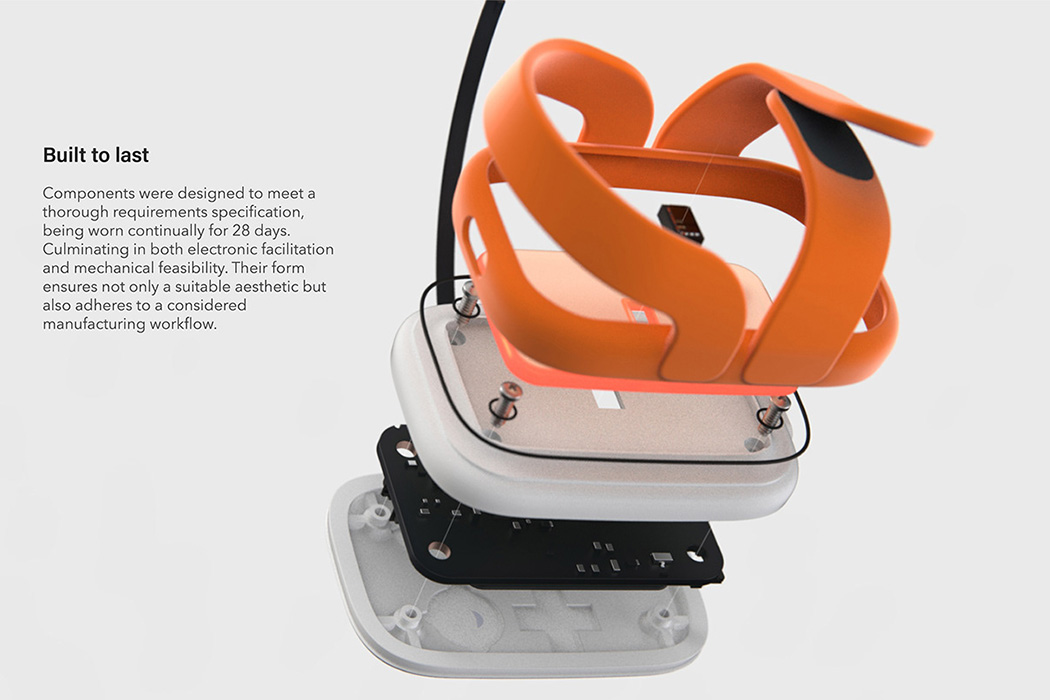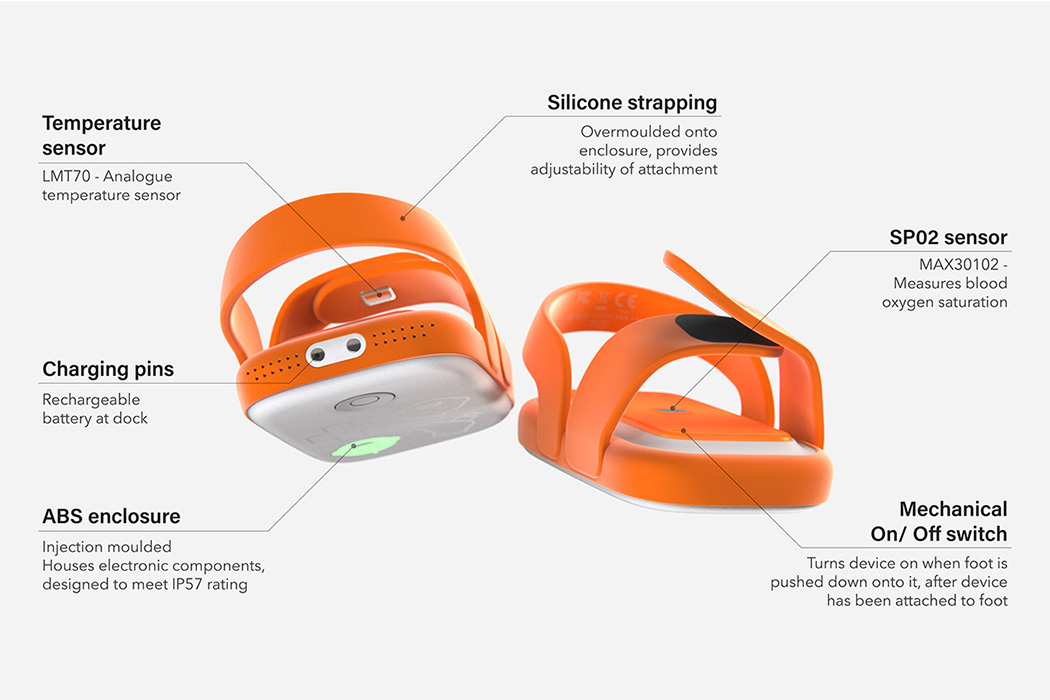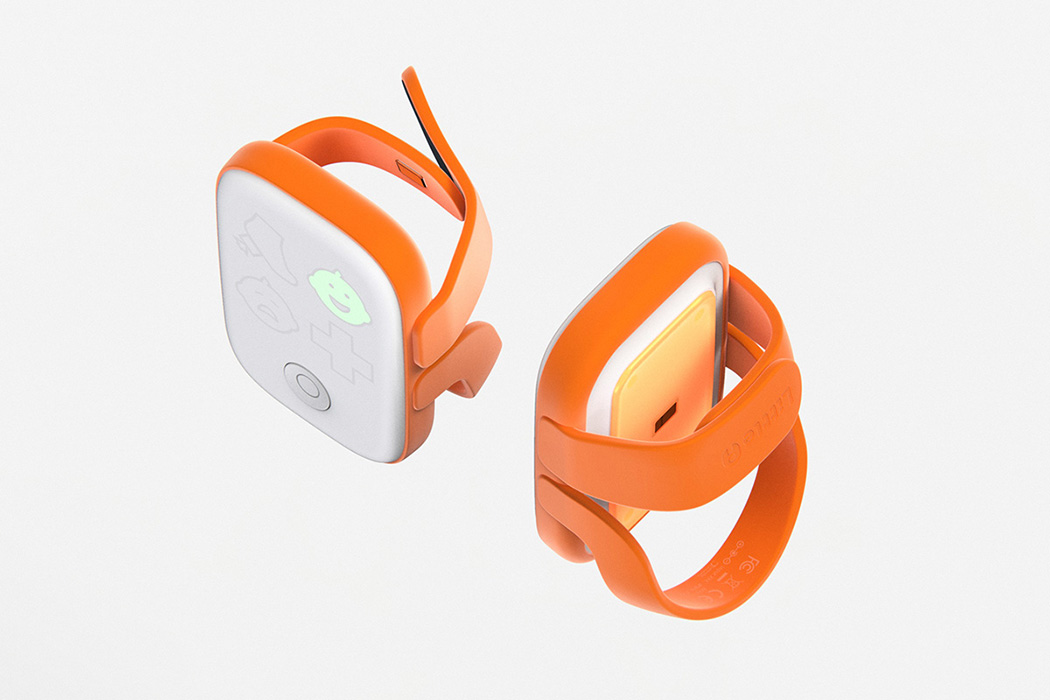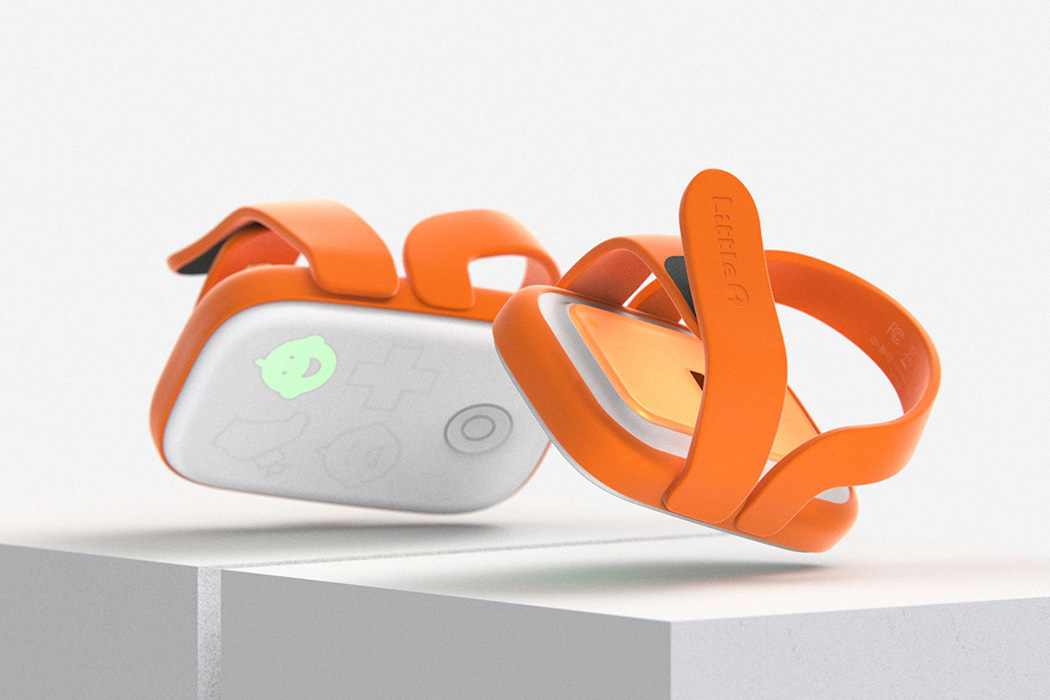
Across the globe in 2018, 2.5 million babies died within their first month of life. Collectively, Africa and Southern Asia made up approximately 87.7% of these deaths. – UNICEF
To address this issue, designers Chris Barnes and others at Cambridge Consultants of Cambridge, UK have designed a wearable health monitor for newborns in areas where current solutions are not easily available. Called ‘Little I’, their innovation empowers parents in low resource countries to monitor the health of their newborns by providing a low-cost, durable device that gives them assurance of their newborn’s survival despite lack of medical knowledge. This service is implemented by NGOs first buying and transporting the device to the community and teaching the workers how to use it. And in parallel, the mother/caregiver would hear about the device within the community and then later be provided one by a health care professional after giving birth. After 28 days, the device is returned which is then cleaned and recharged to be used by another newborn.
A big challenge the designers faced was to create a device that could run in conditions without access to electricity for the full neonatal period of 28 days. The components and features were designed keeping these criteria in mind. The device shaped like a strap-on shoe comes with a silicone strap and an ABS case for holding the electronics. It comes with an ON/OFF switch which gets triggered as soon as the shoe is worn. And within the strap and the case is included the temperature sensors and SPO2 sensors that monitor the health of the baby regularly.
The design of the device is made to appear friendly, non-intrusive, and trustworthy while still communicating an appropriate sense of urgency when necessary. All the while, removing any obvious association with any illness, which might be the case with a design that is more medical in appearance. Thereby minimizing the anxieties that a caregiver could have while putting a never before seen device on their newborn’s foot. The device also boasts a simple user interface using a traffic light system, icons, and distinctive audible sounds to make it effective for anyone to learn how to use it quickly and take immediate action in case of emergencies. A device that is user-friendly, durable, reliable, and can be conveniently carried along, this product is a true healthcare innovation!
Designer: Cambridge Consultants
